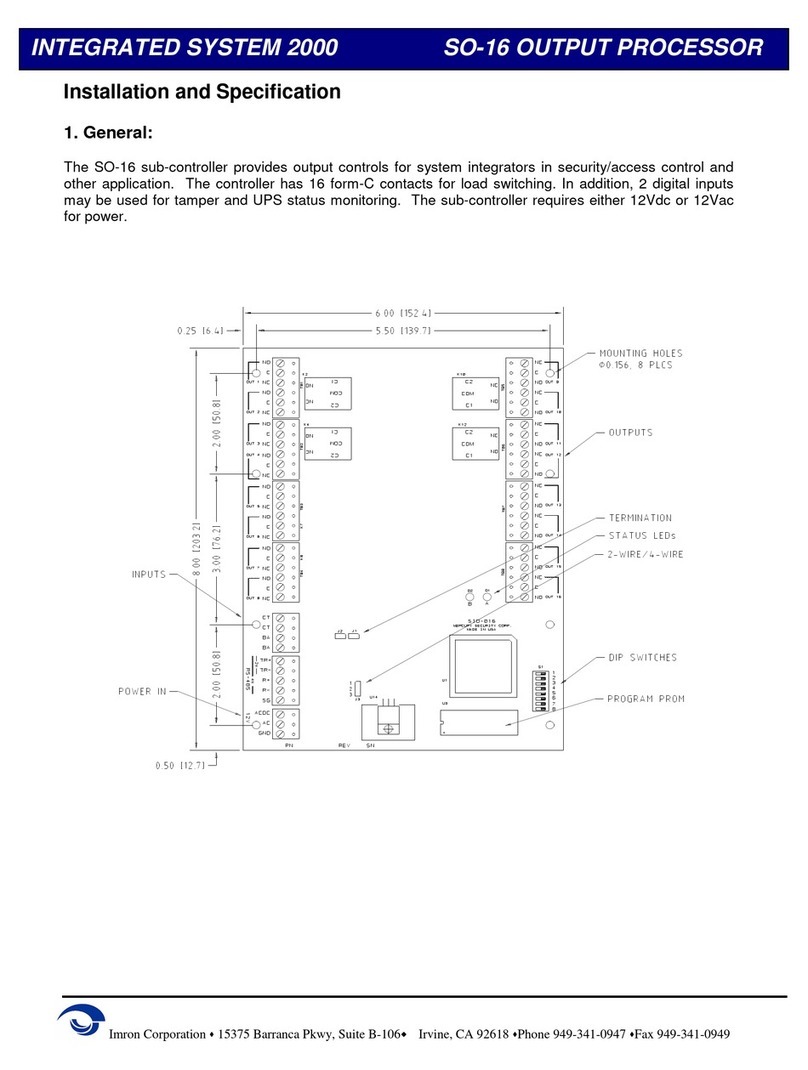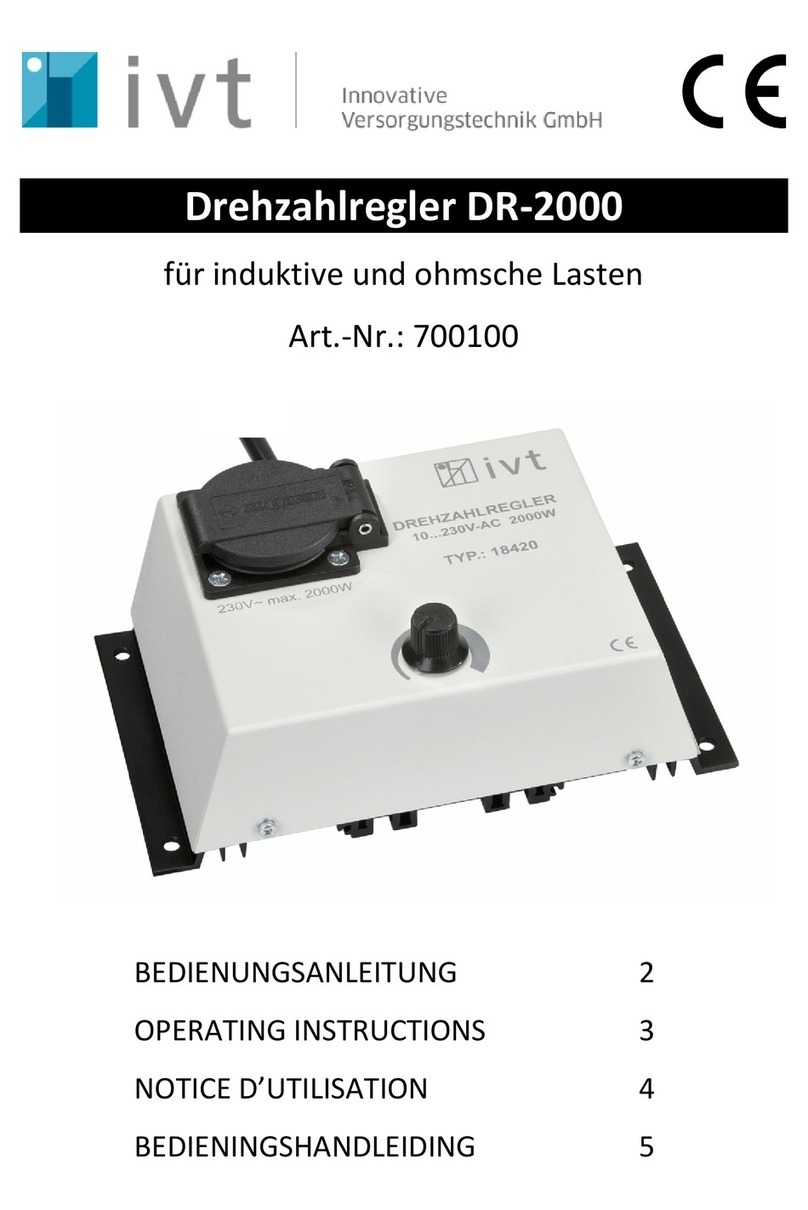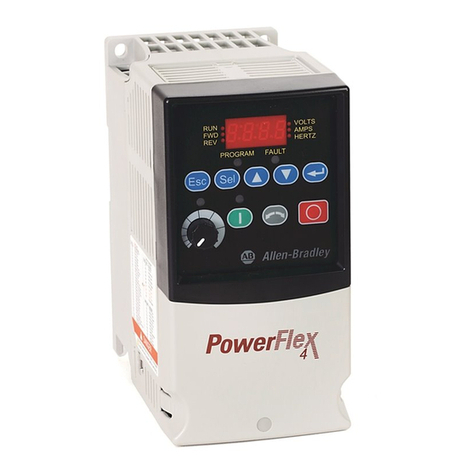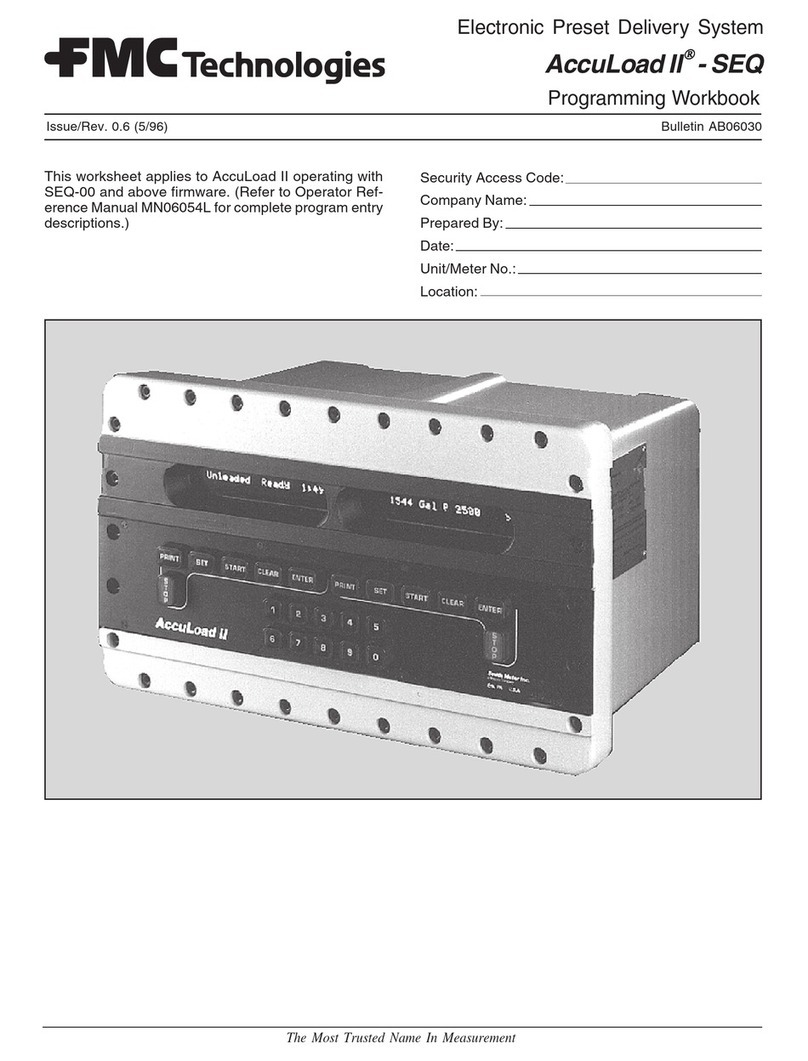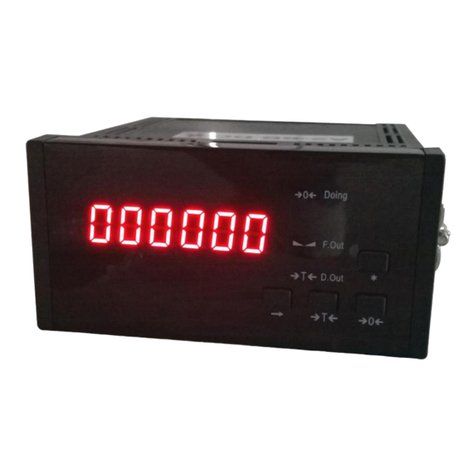Imron Corporation Azure IC2 User manual

Azure IC2 Hardware Manual
03/02/2022
© 2022 IMRON CORPORATION
All rights reserved. No parts of this work may be reproduced in any form or by any means - graphic, electronic, or
mechanical, including photocopying, recording, taping, or information storage and retrieval systems - without written
permission.
While every precaution has been taken in the preparation of this document. Author assumes no responsibility for errors or
omissions, or for damages resulting from the use of information contained in this document or from the use of programs
and source code that may accompany it. In no event shall the publisher and the author be liable for any loss of profit, or any
other commercial damage caused or alleged to have been caused directly or indirectly by this document.

IC2 Hardware Manual
2-Door Intelligent Network Controller
by IMRON Corporation

1
IMRON IC2 HardwareManual
2022 IMRON CORPORATION
This manual contains confidential information and may only be reproduced or distributed with the written consent of IMRON CORPORATION.
IMPORTANT INFORMATION
W A R N I N G
HIGH VOLTAGE, AC MAIN POWER SHOULD ONLY BE CONNECTED BY QUALIFIED, LICENSED
ELECTRICIANS. ALL APPLICABLE LAWS AND CODES MUST BE FOLLOWED. IF THIS
PRECAUTION IS NOT OBSERVED, PERSONAL INJURY OR DEATH COULD OCCUR
Power should not be applied to the system until after the installation has been completed. If this
precaution is not observed, personal injury or death could occur, and the equipment could be
damaged beyond repair.
-Verify that the external circuit breaker which supplies power to the device power supply is turned off
prior to installation.
-Verify that the output voltage of the power supply is within specifications prior to connection to the
device.
C A U T I O N
Several important procedures should be followed to prevent electro-static discharge (ESD) damage
to sensitive CMOS integrated circuits and modules.
-All transport of electronic components, including completed reader assemblies, should be in static
shield packaging and containers.
-Handle all ESD sensitive components at an approved static controlled workstation. These
workstations consist of a desk mat, floor mat and an ESD wrist strap. Workstations are available from
various vendors including the 3M company.
FCC Compliant
This device complies with Part 15 of FCC Rules. Operation is subject to the following two conditions:
1.This device may not cause harmful interference, and
2.This device must accept any interference received, including interference that may cause undesired
operation.
This equipment has been tested and found to comply with the limits for a Class A digital device,
pursuant to Part 15 of the FCC Rules. These limits are designed to provide reasonable protection
against harmful interference when the equipment is operated in a commercial environment. This
equipment generates, uses, and can radiate radio frequency energy and, if not installed and used in
accordance with the instruction manual, may cause harmful interference to radio communications.
Operation of this device in a residential area is likely to cause harmful interference in which case the
user will be required to correct the interference at his/her own expense. The user is advised that any
equipment changes, or modifications not expressly approved by the party responsible for compliance
would void the compliance to FCC regulations and therefore, the user's authority to operate the
equipment.
CE Compliant
UL & ULC Recognized
•UL294
•UL294B
•UL1076 & ULC/ORD 1076
•UL2610

2
IMRON IC2 HardwareManual
2022 IMRON CORPORATION
This manual contains confidential information and may only be reproduced or distributed with the written consent of IMRON CORPORATION.
Part I
Introduction
1
Introduction
The IC2 is a 2-door intelligent controller with 8 supervised inputs, 4 relay outputs. IO & Reader Interface panels
can connect to the IC2 over RS485 serial ports.
1.1 General Features
•Two on-board reader ports for (2) Wiegand readers or up to (2) OSDP readers
•Full, Stand-Alone Operation with local database of up to 60,000 cards & 100,000events
•One 10/100 Ethernet connection
oSecond Ethernet connection possible with USB-to-Ethernet adapter
•Up to 8 Card Formats
•255 Access Levels PerCard
•Activation/Deactivation Time
•8 Supervised Alarm Inputs
oConfigurable termination resistor values for supervisedinputs
•4 Relay Outputs
•Inputs & Outputs fullyre-assignable
•Two, 2-wire RS-485 ports for downstream communication
oSupports proprietary or OSDP protocol
•1 Unsupervised Cabinet Tamper Input
•1 Unsupervised Power FaultInput
•1 LED Output per reader port (tri-state control)
o1 Buzzer Output (open collector) per reader port
•Buzzer output can be repurposed for 2-wire LEDcontrol

4
IMRON IC2 HardwareManual
2022 IMRON CORPORATION
This manual contains confidential information and may only be reproduced or distributed with the written consent of IMRON CORPORATION.
2.1 Terminal Connectors
The IC2 uses terminal blocks for connecting power, readers & door control signals, supervised alarm inputs, and
relay output connections. The connection terminals are factory equipped with removable screw-down quick
connectors which are easily removed from the board by firmly grasping the connector and pulling away from the
board. If pliers are used to remove the connectors, they should be of the rubber-tipped type. Be careful to not
damage onboard components when using any tools near the board. The proper location of the quick connectors
is outlined in white on the board.
IC2 Terminal Connections
Power, Tamper, AC Fault Connections
TB1-1
Power Fault Return
GND
AC Power Fault
TB1-2
Power Fault
PFLT
TB1-3
Tamper Input Return
GND
Cabinet Tamper Input
TB1-4
Tamper Input
TMP
TB1-5
Ground
GND
Power Input Connection 12 - 24 Vdc
TB1-6
Power Input
VIN
TB2-1
Ground
GND
Vin or 12 Vdc if PoE is used
TB2-2
No Connection
TB2-3
Voltage Output
VOUT
Serial Connections
TB3-1
Ground
GND
Serial 2-wire RS-485 Port 1
TB3-2
Transmit/Receive Data
(-)
TR-
TB3-3
Transmit/Receive Data
(+)
TR+
TB4-1
Ground
GND
Serial 2-wire RS-485 Port 2
TB4-2
Transmit/Receive Data
(-)
TR-
TB4-3
Transmit/Receive Data
(+)
TR+
Input Connections
TB5-4
Input 1
IN1
Input 1
TB5-3
Input 1 Return
IN1G
TB5-2
Input 2
IN2
Input 2
TB5-1
Input 2 Return
IN2G
TB6-4
Input 3
IN3
Input 3
TB6-3
Input 3 Return
IN3G

5
IMRON IC2 HardwareManual
2022 IMRON CORPORATION
This manual contains confidential information and may only be reproduced or distributed with the written consent of IMRON CORPORATION.
TB6-2
Input 4
IN4
Input 4
TB6-1
Input 4 Return
IN4G
TB7-4
Input 5
IN5
Input 5
TB7-3
Input 5 Return
IN5G
TB7-2
Input 6
IN6
Input 6
TB7-1
Input 6 Return
IN6G
TB8-4
Input 7
IN7
Input 7
TB8-3
Input 7 Return
IN7G
TB8-2
Input 8
IN8
Input 8
TB8-1
Input 8 Return
IN8G
Relay Output Connections
TB10-1
Normally Open
OUT 1 - NO
Relay K1 Connection
TB10-2
Common
OUT 1 - C
TB10-3
Normally Closed
OUT 1 - NC
TB10-4
Normally Open
OUT 2 - NO
Relay K2 Connection
TB10-5
Common
OUT 2 - C
TB10-6
Normally Closed
OUT 2 - NC
TB9-1
Normally Open
OUT 3 - NO
Relay K3 Connection
TB9-2
Common
OUT 3 - C
TB9-3
Normally Closed
OUT 3 - NC
TB9-4
Normally Open
OUT 4 - NO
Relay K4 Connection
TB9-5
Common
OUT 4 - C
TB9-6
Normally Closed
OUT 4 - NC

6
IMRON IC2 HardwareManual
2022 IMRON CORPORATION
This manual contains confidential information and may only be reproduced or distributed with the written consent of IMRON CORPORATION.
Reader Connections
Location
Type
Label
Function
TB12-1
Ground
(Reader
Power)
GND
Reader 1 Device Connections
TB12-2
Data
DAT/D0
TB12-3
Clock
CLK/D1
TB12-4
Beeper
(Buzzer) Control
BZR
TB12-5
Green LED
Control
LED
TB12-6
VDC
(Reader
Power)
RVO
TB11-1
Ground
(Reader
Power)
GND
Reader 2 Device Connections
TB11-2
Data
DAT/D0
TB11-3
Clock
CLK/D1
TB11-4
Beeper
(Buzzer) Control
BZR
TB11-5
Green LED
Control
LED
TB11-6
VDC
(Reader
Power)
RVO
Table 2.1: IC2 Terminal Connections

7
IMRON IC2 HardwareManual
2022 IMRON CORPORATION
This manual contains confidential information and may only be reproduced or distributed with the written consent of IMRON CORPORATION.
2.2 Jumpers
Figure 2.2: IC2 Jumpers
JUMPER
SETTING
DESCRIPTION
J1
Labeled
PoE VIN
PoE VIN
12-24V DC/DC Power supply. DEFAULT
PoE VIN
PoE (Power over Ethernet) power source
J2
ON/OFF
RS485 termination - Serial Port 1 (COM1)
J3
ON/OFF
RS485 termination - Serial Port 2 (COM2)
J4
ON/OFF
RS485 termination - Reader Port 2 (RDR2)
J5
Labeled
VIN 12V
VIN 12V
12V regulated power for Reader Ports (RVO);
Only use this setting when VIN >= 20VDC
VIN 12V
VIN passthrough power for Reader Ports (RVO);
Use VIN passthrough if using PoE power source
J6
ON/OFF
RS485 termination - Reader Port 1 (RDR1)
Note: RS485 termination jumpers (J2, J3, J4, & J6) are shipped from the factory in the OFF (termination
disengaged) position. Only turn ON termination if the IC2 is at the end of the serial bus.

8
IMRON IC2 HardwareManual
2022 IMRON CORPORATION
This manual contains confidential information and may only be reproduced or distributed with the written consent of IMRON CORPORATION.
2.3 SOM (System on Module)
SOM Port: U1
The SOM (System On Module) should not be removed. In case a replacement is necessary, align the notch
at the bottom of the SOM with the connector, slide the module in at a 45-degree angle until the contact pins
are fully covered by the connector then gently press the SOM towards the board until it clicks into place. Make
sure the SOM is properly installed before powering on the board.
2.4 Micro USB OTG Port
The USB connection port (P1) is reserved for future use and should not be connected to any device.
2.5 MicroSD Card
The micro-SD card socket (P3) is reserved for future use and should not be used.
2.6 LEDs
The IC2 has 24 LEDs for use in monitoring panel functions and diagnosing issues.
HB
Heartbeat & Offline / Online status
Offline: 200ms ON, 800ms OFF
Online: 800ms ON, 200ms OFF
HOST
Host COM Status –ON when online with Host software
BUS
Internal Bus Activity –Flashes repeatedly while data is being exchanged
COM1
RS-485 Serial Port 1 –Flashes when data is transmitted
COM2
RS-485 Serial Port 2 –Flashes when data is transmitted
TMP
Cabinet Tamper –ON when in ALARM, OFF when SECURE
PFLT
Power Fault –ON when in ALARM, OFF when SECURE
RDR1
Reader Port 1 –Wiegand Reader: Flashes ON when receiving data
RDR2
Reader Port 2 –Wiegand Reader: Flashes ON when receiving data
Alarm Zone Inputs LEDs
1
Input IN1 Status: OFF = Secure, ON = Alarm, Flash = Fault. See Note 1
2
Input IN2 Status: OFF = Secure, ON = Alarm, Flash = Fault. See Note 1
3
Input IN3 Status: OFF = Secure, ON = Alarm, Flash = Fault. See Note 1
4
Input IN4 Status: OFF = Secure, ON = Alarm, Flash = Fault. See Note 1
5
Input IN5 Status: OFF = Secure, ON = Alarm, Flash = Fault. See Note 1
6
Input IN6 Status: OFF = Secure, ON = Alarm, Flash = Fault. See Note 1
7
Input IN7 Status: OFF = Secure, ON = Alarm, Flash = Fault. See Note 1
8
Input IN8 Status: OFF = Secure, ON = Alarm, Flash = Fault. See Note 1
Output Relays
K1
Relay OUT 1 (K1): ON = Energized
K2
Relay OUT 2 (K2): ON = Energized
K3
Relay OUT 3 (K3): ON = Energized
K4
Relay OUT 4 (K4): ON = Energized

9
IMRON IC2 HardwareManual
2022 IMRON CORPORATION
This manual contains confidential information and may only be reproduced or distributed with the written consent of IMRON CORPORATION.
Ethernet –P2
Speed (left side)
Green: OFF = 10Mbps, ON = 100Mbps
Link (right side)
Yellow: flashing –network activity
PoE Power
PoE_PWR
ON = PoE power available (Power over Ethernet)
Note 1: Every 4 seconds the LED is pulsed to its opposite state for 0.1 seconds
2.7 Function Buttons
The IC2 is equipped with three function buttons which allow for control of various functions.
RESET
This button will perform a hardware reboot which is like disconnecting and re-connecting power. To perform a
reboot, press the button and immediately release. The status LEDs will light up and the device will reboot.
SSH
This button will enable connection to the device by SSH. This mode is only used for advanced troubleshooting.
After pressing the button, SSH will be active for 30 seconds. If there is no connection within 30 seconds, SSH
will be disabled.
Factory Default
Network Reset - This function will reset the network interface to the default configuration. All other
configurations and saved information will be kept. This function can be used when the network configuration
is unknown or if it’s not possible to communicate with the device using the current configuration. To perform a
network reset:
1.
Make sure that the device is powered on and functioningnormally.
2.
Press and hold the FACTORY DEFAULT button for approximately 3 seconds until LED3 is lit.
3.
Release the FACTORY DEFAULT button.
4.
After a few seconds, the network will be reset to its default configuration (see the Communication
Connection section for the default parameters).
2.8 Dip Switches
The IC2 has 4 DIP switches that are reserved for future use.
2.9 Memory & RTC Retention During Power Failure
The IC2 configuration and cardholder memory is stored in non-volatile memory which does not require
constant power to retain information. In the case of sudden power failure, the IC2 has onboard backup power
to retain volatile memory.
The RTC (Real Time Clock) is persevered through a power outage with a coin cell battery. See the
“Specifications” section for more information. The coin cell battery power level is monitored and a low battery
condition will generate an event message.

10
IMRON IC2 HardwareManual
2022 IMRON CORPORATION
This manual contains confidential information and may only be reproduced or distributed with the written consent of IMRON CORPORATION.
2.10 Mounting
Eight holes are provided for mounting the IC2. Mount at least 0.25 inches above the conductive surfaces. One
mounting hole is plated for connecting to Chassis (Earth) ground.
Figure 2.3: IC2 Mounting Holes [inches (mm)]

11
IMRON IC2 HardwareManual
IC2 HardwareManual
© 2022 IMRON CORPORATION
This manual contains confidential information and may only be reproduced or distributed with the written consent of IMRON COPORATION.
Part III
System Wiring & Setup
3
System Wiring & Setup
This section will provide installation and wiring instructions as well as hardware interface information as it
applies to the access control system. To guard personal safety and avoid damaging equipment it is important
to have a full understanding of electrical wiring best-practices and safety. The following sections provide
general guidelines relating to the IC2 but are not a substitute for formal training in safely handling electrical
systems!
3.1 Power
3.1.1
Primary Board Power
Connector: TB1
When operating on 12VDC, the IC2 has a peak current consumption of 700mA when charging a depleted
super capacitor and a normal operating max of 320mA. Due to large inrush currents, it is recommended to
use a power supply with a “soft-start”feature. See Section 6 “Specifications” for more details on power
consumption.
Take care when selecting a power supply for use with the IC2. Most power supplies on the market today
provide good input/output isolation, however those which do not provide isolation (or have high leakage
capacitance), coupled with accidental AC power line interchange, presents serious ground fault problems for
installers. With ground fault, the signal reference between subsystems may be 115 Vac (230 Vac) apart. If
these subsystems are interconnected, the large potential difference will cause equipment damage orpersonal
injury. IMRON Corporation recommends the use of isolated, continuous power supplies only.
In the case of over-current, solid-state fuses integrated on the IC2 panel will ‘trip’ to protect the components
of the panel. In many cases, the solid-state fuses will reset automatically when normal current resumes,
however it may be necessary to interrupt the supply of power to allow the fuses to reset.
3.1.2
Powering Peripherals
The IC2 has multiple output ports for distributing power to peripheral devices. Each port has its own voltage
and current specs and have over-current protection.
The installer must adhere to overall current maximums of the power supply, whether PoE or DC/DC from the
wall. Detailed electrical specs are in the “Specifications” section of this document (section 6).
To maximize longevity, it is not recommended to fully load all peripheral power ports when operating at the
top of the operating temperature range.
Auxiliary Output Power “VOUT” (TB2)
The VOUT port can be used to power peripheral devices such as strikes, IO modules, readers, etc. This port
is a direct passthrough from the primary power VIN (same voltage as VIN), whether using PoE or wall supply.
This port has a 1 Amp current maximum.
Reader Port Power “RVO” (TB11 – pin 6) & (TB12 –pin 6)
Readers can be powered directly from the two reader ports. The RVO voltage is jumper selectable to be either
passthrough from VIN or a regulated 12VDC. The regulated 12VDC setting is only to be used when VIN >
20VDC. Each port has a maximum of 500mA and the combined current maximum between both reader ports
is 600mA.
USB (P1)
The USB port is 5V and has a current maximum of 500mA.

12
IMRON IC2 HardwareManual
IC2 HardwareManual
© 2022 IMRON CORPORATION
This manual contains confidential information and may only be reproduced or distributed with the written consent of IMRON COPORATION.
3.2 Grounding
DC Ground
This is typically the minus (-) side of the DC output of the power supply. This is never to be connected to
Safety(Earth) Ground onthe ACside. It isto be connected tothe DC ground input of all devices being powered
by one supply. All devices’ ground connections must connect here if the device is powered by this supply.
AC Ground
Known as “Safety”, “Earth”, or “Chassis” ground. To avoid ground loop current, there must be only ONE point
at which the safety ground connects to the DC ground (usually through the DC/DC power supply).
3.3 Communications
3.3.1
Network
Connector: P2
The IC2 communicates with UnityIS over the network. Network connectivity can be achieved using the
dedicated 10/100 Ethernet port and/or the USB port when using an USB-to-Ethernet adapter. Connection to
network switch should be made usingstandard CAT5e or CAT6 cable.
3.3.2
Downstream RS-485 Serial Ports
Connectors: TB3 & TB4
RS-485 is an electrical interface standard for multi-point communication on bus transmission lines. It allows
high-speed data transfer over extended distance (4000 ft, 1219m). The IC2 can be configured to communicate
with downstream IO or Reader Interface panels on two available RS-485 ports (COM1 & COM2). The IC2
supports a 2-wire bus setup. Both ports can be configured to communicate using different protocols.
Note: COM1 & Reader Port 1 share an internal serial bus and COM2 & Reader Port 2 share another internal
serial bus. Therefore, COM 1 & Reader Port 1 must use the same baud rate and protocol and have unique
addressing between them. COM 2 & Reader Port 2 must also share the same baud rate and protocol
and have unique addressing between them.
Device Wiring
2-wire RS-485 consists of three wires: TR+, TR-, & SG (signal ground). Both TX and RX are done on the
same pair of wires. Match the polarities; connect positive (+) to positive and negative (-) to negative. Wiring
recommendation of 24 AWG, shielded twisted pair. Wiring requirements satisfied by Belden 9841 or
equivalent.

13
IMRON IC2 HardwareManual
IC2 HardwareManual
© 2022 IMRON CORPORATION
This manual contains confidential information and may only be reproduced or distributed with the written consent of IMRON COPORATION.
Figure 3.1: Device Wiring
Bus Configuration
The maximum number of field devices on one RS-485 bus is 32. Communication cables for RS-485 should
be laid out in a "multi-drop topology". This means that there should only be two ends to the line and devices
should be located directly along this line. The IC2 controller can be located at any point along the line. T-stubs
longer than 10ft and Star wiring topology will cause communication problems and must be avoided. All the
devices on the bus must communicate with the same protocol, use the same baud rate, and all the downstream
devices connected to the IC must have a unique address (set with DIP switches on downstream devices).
Serial Bus Topology (Controller in Middle) - Correct
Serial Bus Topology (Controller at End) - Correct
“Star” Topology - Incorrect
“T stub” Topology - Incorrect
Figure 3.2: RS-485 Bus Topologies

14
IMRON IC2 HardwareManual
IC2 HardwareManual
© 2022 IMRON CORPORATION
This manual contains confidential information and may only be reproduced or distributed with the written consent of IMRON COPORATION.
Termination
For the most reliable communications, the RS-485 bus must be terminated at both ends. The terminators are
integrated on the board and are engaged via user installed jumpers. Never engage termination of devices in
the middle of the communication bus.
External termination modules (ATM-48) are not required but can be used. If using the ATM-48 termination
module, DO NOT install the jumpers on the board. The wiring is as follows:
ATM-48 Pin 1 -> TR+
ATM-48 Pin 2 -> TR-
Signal Ground (SG)
When devices are powered from different power supplies, a common ground reference must be established
on the RS-485 bus. This is the ground (GND) connection on the Serial port connector. Failure to have a
common ground between devices may cause communication errors. If connecting the RS-485 bus with
shielded wire, the shielding can be used as the signal ground connection. Or, if the environment is known to
be electrically noisy, the wire’s shield can be connected to safety/chassis/Earth ground and a separate wire
can be used for signal ground.
Grounding Potential Difference Checks Before Connecting
Before a device is connected to an RS-485 subsystem, it must be checked for ground fault. Ground faults can
damage all devices connected to the RS-485 communication line. To check if there is ground fault for a new
unit, follow the steps below:
1.
Apply power to all devices already successfully connected to the RS-485line.
2.
Power up the new unit, but DO NOT connect it to the RS-485 line.
3.
Connect the signal ground (SG) of the RS-485 line through a 10k limitingresistor.
4.
Measure the AC and DC voltage across the resistor. There should NOT be more than 1 volt across the
resistor. Otherwise find and clear thefault.
5.
Connect the new unit to the RS-485 line only if no ground fault isfound.
3.4 Unsupervised Cabinet Tamper & Power Fault
Connector: TB1
The cabinet tamper (TMP) and power fault (PFLT) inputs only support unsupervised configurations. The
cabinet tamper input is wired to the enclosure and detects when the enclosure door is opened and closed.
The power fault input is wired to the power supply and detects when there is an issue with the power supply.
Wire these inputs with 24 AWG minimum. See “Unsupervised” in Section 3.6.1 wiring diagram.
Figure 3.3: Cabinet Tamper & Power Fault Wiring

15
IMRON IC2 HardwareManual
IC2 HardwareManual
© 2022 IMRON CORPORATION
This manual contains confidential information and may only be reproduced or distributed with the written consent of IMRON COPORATION.
3.5 Reader Ports
Connector: TB11 & TB12
The IC2 has two onboard reader ports that support Wiegand readers. The RS-485 reader bus is a true RS-
485 port, meeting all requirements of the electrical standard.
PIN
DESCRIPTION
GND
Ground connection for the reader
DAT/D0 & CLK/D1
Wiegand reader data connections (see 3.4.1 and 3.4.2 below).
BZR
Open-collector buzzer output. Can also be used for 2-wire LED control
LED
Tri-state LED signal
RVO
Reader power; jumper selectable to either be VIN passthrough or a
regulated 12VDC
3.5.1
Wiegand Readers
Each reader port can support one Wiegand reader.
Wiegand readers usually utilize all pins on the reader port. The wiring to a Wiegand reader should be made
using 24 AWG minimum, shielded cable with up to 6 conductors. Do not exceed 500 feet (152 m) between
the IC2 and reader. 18 AWG cable may be required for long cable lengths or for large current requirements.
If twisted pair cable is used, do not wire Data 1/Clock and Data 0/Data in the same pair. Connect the shield
drain wire of the cable at the GND terminal of the appropriate reader connector on the IC2. Carefully insulate
the drain wire with sleeving for a reliable installation.
Power for each reader port is provided through the “RVO” pins and is selected with a user-installed jumper.
Power supplied on RVO is either a passthrough of VIN (12-24VDC) or a regulated 12VDC. The reader ports
can supply a COMBINED maximum current of 600mA. If the readers have a greater total power requirement,
or if there are other wiring concerns, external power supplies should be used to power the readers. In this
case, only connect the reader power lines to the external power supply; do not connect the reader to two
powersupplies.
For basic operation of the reader, at a minimum the Data 1/Clock and Data 0/Data wires must be connected
from the reader to the IC2 and power supplied to the reader. LED and buzzer control lines do not have to be
connected, but in this case, the LED and buzzer may not function on the reader.
Figure 3.4: IC2 Wiegand Reader Wiring

16
IMRON IC2 HardwareManual
IC2 HardwareManual
© 2022 IMRON CORPORATION
This manual contains confidential information and may only be reproduced or distributed with the written consent of IMRON COPORATION.
3.5.2
RS-485 (OSDP) Readers
In this section, “OSDP reader” will be used to represent what is really any RS-485 reader. The OSDP protocol
standard expands the functionality of readers by enabling a large (and growing) command set.
OSDP readers must be connected to the Serial Port #1 instead of the Reader Ports.
The IC2 supports 2 OSDP readers. OSDP uses a 2-wire interface (transmit and receive on same wires).
Always observe polarity of the lines, connecting positive (+) to positive and negative (-) to negative terminals.
The Signal Ground (GND) must be connected between the readers and the COM 1 port for reliable
communications. “Star” wiring or “T stubs” longer than 10ft must never be used! For more information, see the
Section 3.3.2 above.
Figure 3.5: OSDP Wiring
OSDP connections should be made observing polarity of the lines from the reader. Signal ground
should always be connected.
3.6 Supervised Alarm Inputs
Connector: TB3 –TB8
The IC2 has 8 Supervised Alarm Inputs. These inputs are multi-purpose and are configured with the Host
software. Any input can be assigned as a door contact, REX, or auxiliary alarm input (i.e., motion or glass-
break sensors). With the use of end-of-line termination resistors, the alarms are monitored for not only secure
and alarm states, but also the detection of fault conditions from tampering and accidental damage.
These alarm inputs can be configured as either “Normally Open” or “Normally Closed” and can also operate
in an Unsupervised mode. Unsupervised configuration does not require any external, end of line resistors.
However, unsupervised mode is the least secure and damage or tampering of the line can go undetected,
resulting in missed or false alarms. The unsupervised configuration should not be used in any situation that
requires security. An example of unsupervised input wiring can be seen in Figure 3.9.
Input wiring requires minimum 22 AWG up to 1,000ft (304.8m) and a maximum of 30 Ohms of loop resistance.
3.6.1
End of Line (EOL) Termination Resistors
Using two End-of-Line (EOL) termination resistors, the Supervised mode can detect fault conditions resulting
from accidental damage or tampering. The IC2 will not confuse this condition with a valid secure or alarm
condition. For maximum security, the end-of-line termination resistors should be placed at the END of the
cable, farthest away from the IC2. There are multiple EOL options, ranging from ready-made terminal block
connectors to individual, hand-placed resistors. The following wiring diagram shows some of the pre-defined
termination resistor configurations.

17
IMRON IC2 HardwareManual
IC2 HardwareManual
© 2022 IMRON CORPORATION
This manual contains confidential information and may only be reproduced or distributed with the written consent of IMRON COPORATION.
Figure 3.6: Input Supervision
Supervised inputs can be configured with Host Software to use different EOL resistor combinations.
3.7 Output Relays
Connector: TB9 & TB10
The IC2 has four output relays onboard. These relays can either control a door strike (lock) or other electrical
device connections or other miscellaneous output control. Relay functions are defined in the Host software.
The onboard relays can switch up to 2A @ 30VDC.
3.7.1
Door Strike Wiring
A typical electric door strike (lock) will require around 250mA (0.25 Amps) to operate. If the locking device
requires more than 2 Amps to control, another external power-switching device/relay of adequate power rating
must be used. Some strikes such as magnetic strikes are inductive loads, in which case is recommended to
derate the relay’s rated current by 50%.
Wiring between the strike power supply, strike relay (internal or external) and the electric lock should be of
sufficient gauge (16 to 18 AWG recommended) to prevent excessive voltage drop under all circumstances.
3.7.2
Auxiliary Output Relay
Aside from controlling door strikes, relay outputs can be used for controlling other audible and visual devices.
Auxiliary relay functionality is configured via the Host software.
3.7.3
Voltage Spike Suppression
Due to inductive nature of a door strike, energizing and deenergizing of the relay can cause voltage spikes
across the relay contacts. If no suppression is used to defend against these voltage spikes, communication
problems and permanent damage to the hardware may occur.
Strike Type
Suppression Method
DC Strike
Reverse-biased DIODE with a continuous current rating of at least 1x the strike
current and a breakdown voltage (Vbr) rating of at least 2x the strike voltage.
Usually a 1N4001 –1N4006 will work.
AC Strike
A Metal Oxide Varistor (MOV) will usually be included with the strike. If a MOV does
not come with the strike, contact the strike manufacturer for the appropriate MOV
ratings. Be sure to use a UL approved MOV.

18
IMRON IC2 HardwareManual
IC2 HardwareManual
© 2022 IMRON CORPORATION
This manual contains confidential information and may only be reproduced or distributed with the written consent of IMRON COPORATION.
Figure 3.7: Strike Wiring Diagram (DC w/ Diode)
Both DC and AC suppression components are placed identically across the output device’s electrical
terminals.
3.8 Door / Access Point Setup
An Access Point (sometimes referred to simply as “Door”) is the grouping of at least one reader, supervised
inputs, and relay outputs to yield full control and monitoring of a door/entryway. The IC2 supports 2 complete
Access Points by default. More Access Points are possible with the purchase of extra reader licenses allowing
for multi-dropping more OSDP readers. A “complete” Access Point consists of at least one reader, two
supervised inputs (for door contact and REX), and one relay output controlling the door strike. Configuration
and assignment of the Access Point’s interfaces is done through the Host software.
Figure 3.8: Door / Access Point Wiring
3.8.1
Reader
An Access Point needs at least one reader to receive credentials. The IC2 supports both Wiegand and RS-
485 (OSDP readers). Access Points can also use two readers in a “paired” configuration.
3.8.2
Door Contact & Exit Pushbutton/REX Inputs
Table of contents
Other Imron Corporation Controllers manuals
Popular Controllers manuals by other brands
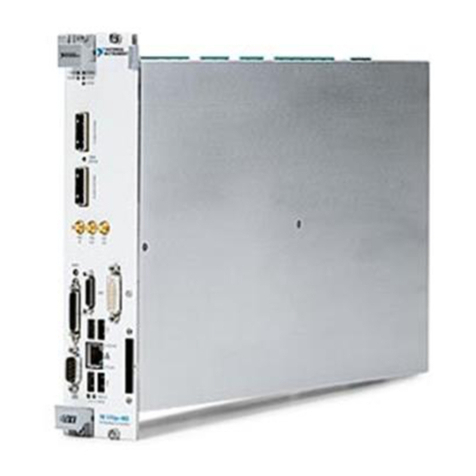
NI
NI VXIpc-882 installation guide
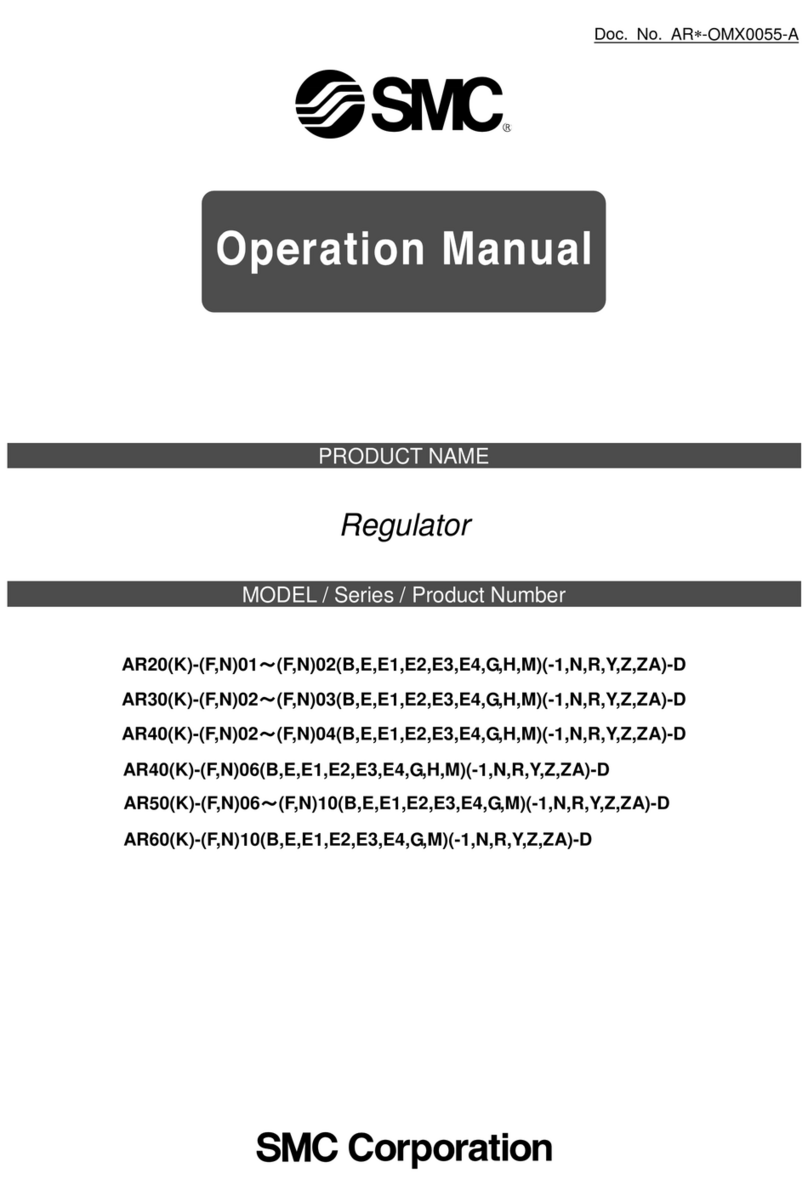
SMC Networks
SMC Networks AR20 Series Operation manual
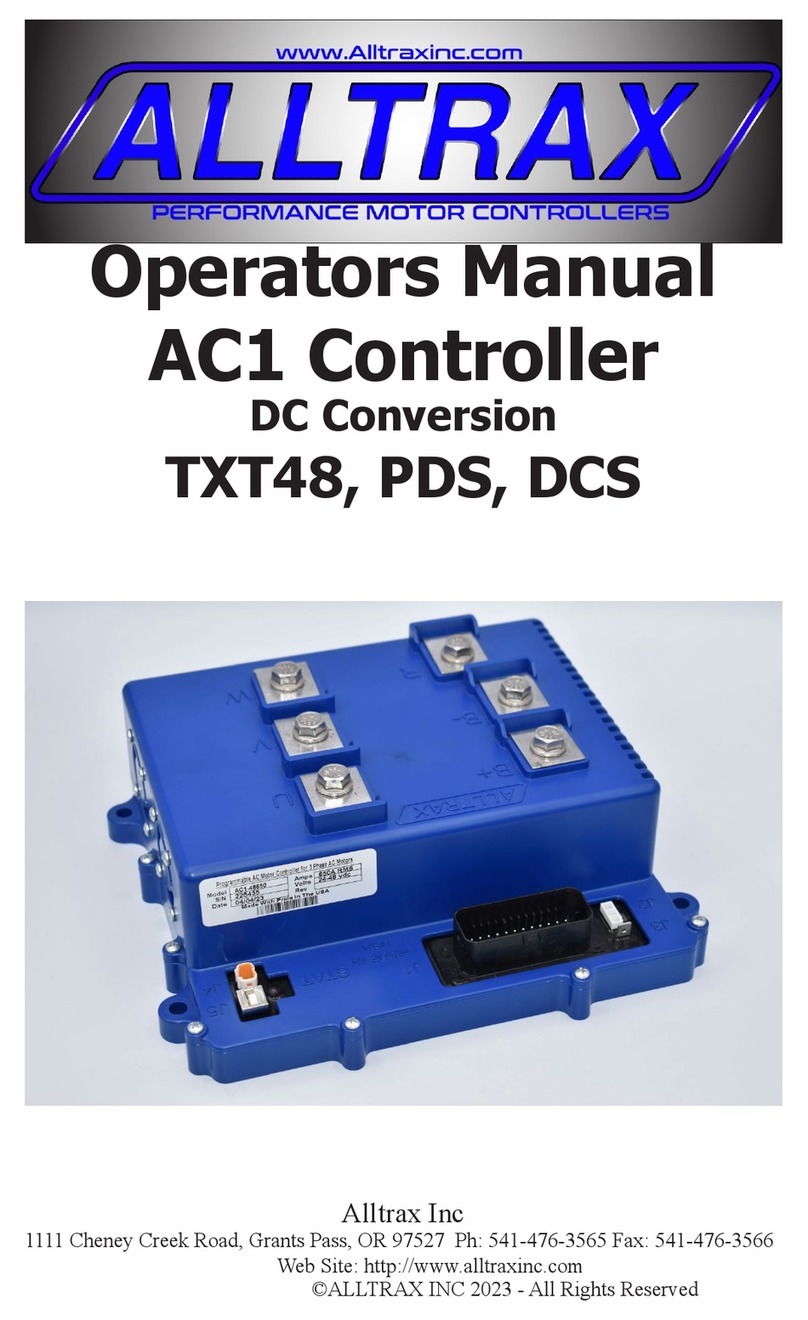
Alltrax
Alltrax AC1 Operator's manual
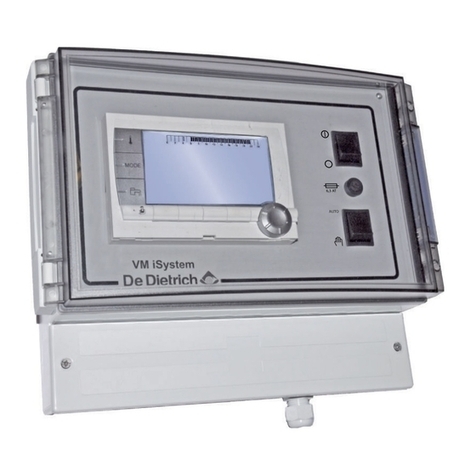
DeDietrich
DeDietrich VM iSystem Installation and service manual
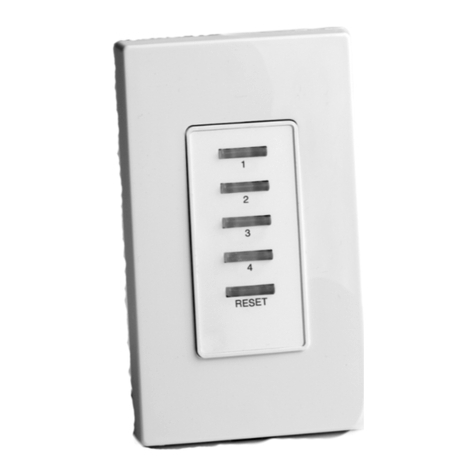
Leviton
Leviton DECORA NE515 installation instructions
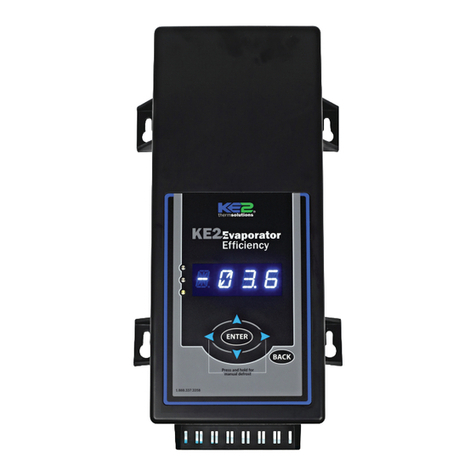
KE2 Therm Solutions
KE2 Therm Solutions 20844 quick start guide

Kelvin Electronics
Kelvin Electronics KL180-2 quick start guide

Mitsubishi Electric
Mitsubishi Electric MR-J5 Series user manual
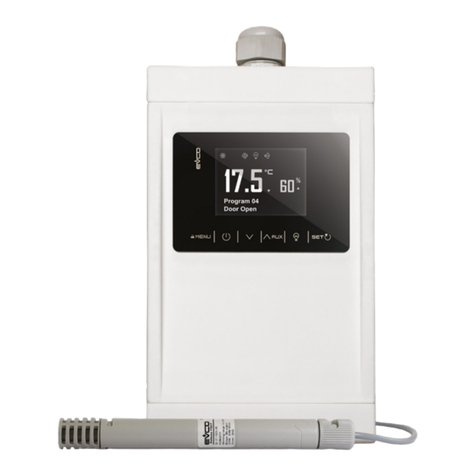
Evco
Evco EVBOX Light J500 Series quick start guide
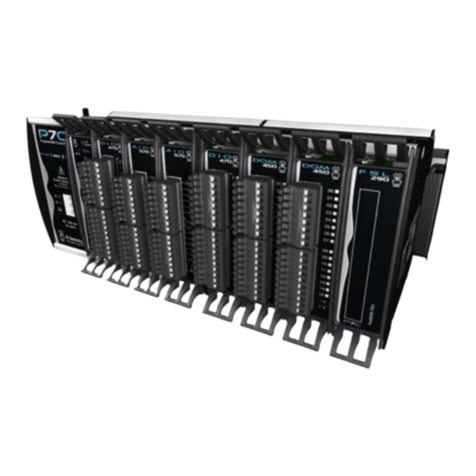
HI tecnologia
HI tecnologia P7C Connection manual
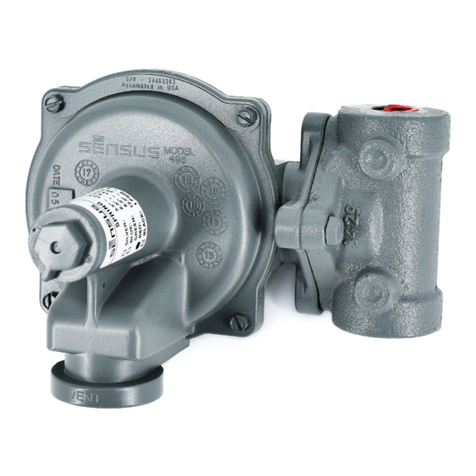
Sensus
Sensus 496 Installation and maintenance instructions

Mitsubishi Electric
Mitsubishi Electric MELSEC iQ-F FX5 user manual


